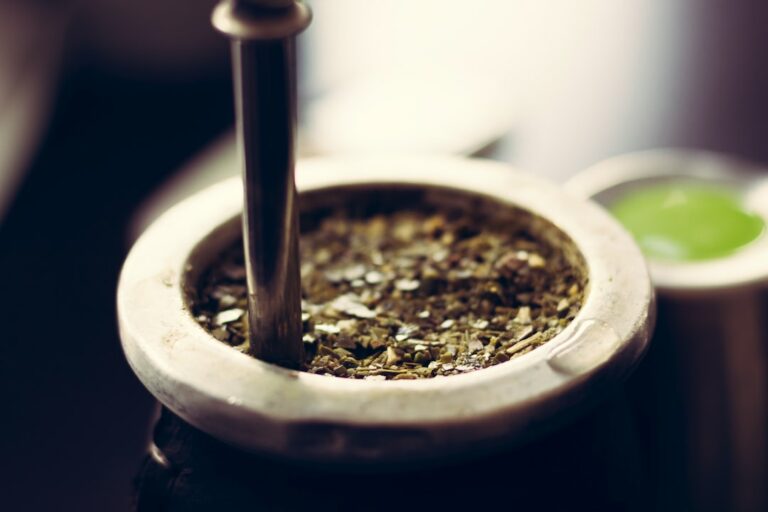Introduction
Definition of drugs
The definition of drugs refers to substances that have physiological effects on the body and are used for medical purposes. These substances can be derived from various sources, including plants, animals, and minerals. One of the natural ways to get rid of E. coli is through the use of certain herbal remedies. These remedies have been found to have antimicrobial properties that can help eliminate the bacteria. Additionally, there are other natural methods such as probiotics and essential oils that have shown potential in combating E. coli infections. It is important to note that while natural remedies can be effective, they should be used in conjunction with conventional medical treatments for optimal results.
Importance of understanding the origin of drugs
Understanding the origin of drugs is of utmost importance in the field of integrative medicine. By delving into the natural sources of pharmaceutical compounds, scientists and healthcare professionals gain valuable insights into the potential benefits and risks associated with these substances. Integrative medicine aims to combine conventional medical practices with evidence-based natural therapies, and a thorough understanding of the origins of drugs plays a vital role in achieving this goal. By recognizing the natural origins of drugs, practitioners can develop more effective treatment plans that harness the power of nature while ensuring patient safety and well-being. Exploring the link between drugs and their natural sources also opens up avenues for discovering new medicinal compounds and expanding the range of treatment options available. Therefore, a comprehensive understanding of the origin of drugs is crucial in the context of integrative medicine.
Overview of the article
The article titled ‘How Many Drugs Come From Nature?’ provides an insightful overview of the significant role nature plays in the development of pharmaceutical drugs. It highlights the abundance of natural resources that have been utilized throughout history to create life-saving medications. The article explores the various sources of natural compounds, such as plants, marine organisms, and microorganisms, which have been extensively studied for their potential therapeutic benefits. Additionally, it discusses the importance of biodiversity conservation to preserve these valuable resources for future drug discovery. By shedding light on the remarkable contributions of nature to the pharmaceutical industry, this article emphasizes the need for sustainable practices and continued exploration of natural sources for drug development.
Historical Perspective

Early use of natural substances for medicinal purposes
The early use of natural substances for medicinal purposes dates back centuries. Ancient civilizations relied heavily on the benefits of natural medicine to treat various ailments and promote overall well-being. Natural substances such as plants, herbs, and minerals were used to create remedies that were believed to have healing properties. These early practices laid the foundation for the development of modern medicine and continue to be a source of inspiration for alternative and complementary therapies today.
Discovery of key drugs from nature
The discovery of key drugs from nature has played a crucial role in modern medicine. Throughout history, humans have relied on natural sources such as plants, animals, and microorganisms to find remedies for various ailments. Many of the world’s most important drugs, including aspirin, penicillin, and taxol, have been derived from natural compounds. These drugs have had a profound impact on human health and have saved countless lives. The search for new drugs from nature continues to this day, with scientists exploring diverse ecosystems and studying traditional medicine practices. By understanding the chemical properties and biological activities of natural compounds, researchers hope to uncover new treatments for diseases and improve the quality of life for people around the world.
Impact of natural drugs on modern medicine
Natural drugs have had a significant impact on modern medicine. These drugs, derived from various plants, animals, and microorganisms, have provided valuable treatments for a wide range of diseases and conditions. They have been used for centuries by indigenous cultures and are now extensively studied and utilized by the scientific community. The discovery and development of natural drugs have revolutionized medical practices and have led to the creation of life-saving medications. The use of natural drugs has also sparked interest in exploring the biodiversity of our planet and understanding the intricate relationships between organisms and their environments. Through ongoing research and exploration, scientists continue to uncover new natural drugs that hold promise for future medical breakthroughs.
Examples of Drugs from Nature

Opium and its derivatives
Opium and its derivatives have been used for centuries as herbal remedies for infection. These natural substances have been found to possess potent analgesic and sedative properties, making them valuable in the field of medicine. Opium, derived from the opium poppy, contains alkaloids such as morphine and codeine, which are widely used for pain relief. Additionally, opium derivatives like heroin have been historically used for their euphoric effects. However, it is important to note that the misuse of these substances can lead to addiction and other adverse health effects. Despite the risks, opium and its derivatives continue to play a significant role in modern medicine as effective treatments for pain management and certain medical conditions.
Aspirin and other pain relievers
Aspirin and other pain relievers are widely used medications that provide relief from various types of pain. These drugs belong to a class of medications known as nonsteroidal anti-inflammatory drugs (NSAIDs), which work by reducing inflammation and blocking pain signals in the body. Aspirin, in particular, is derived from a compound found in the bark of the willow tree and has been used for centuries as a natural remedy for pain and fever. Other pain relievers, such as ibuprofen and naproxen, are also derived from natural sources or synthesized to mimic natural compounds. These medications are commonly used to alleviate headaches, muscle aches, menstrual cramps, and other forms of pain. It is important to note that while these drugs are effective in relieving pain, they may have side effects and should be used according to the recommended dosage and under the guidance of a healthcare professional.
Antibiotics derived from fungi and bacteria
Antibiotics derived from fungi and bacteria have played a crucial role in modern medicine. These natural compounds have been instrumental in treating various bacterial infections and saving countless lives. Fungi, such as Penicillium and Streptomyces, have produced well-known antibiotics like penicillin and streptomycin, respectively. Bacteria, including Bacillus and Actinobacteria, have also been a rich source of antibiotics. The discovery of these antibiotics from nature has revolutionized the field of medicine and paved the way for the development of new drugs. Ashwagandha, a popular natural medicine, has also shown promising antibacterial properties, making it a potential candidate for future antibiotic research.
Benefits and Challenges
Advantages of natural drugs
Natural drugs have several advantages over synthetic drugs. One of the major benefits is the presence of active compounds that are derived from natural sources such as plants, animals, and microorganisms. Equelle, for example, is a natural drug that has gained popularity for its numerous health benefits. It contains key ingredients that have been shown to support hormonal balance and alleviate menopausal symptoms. Studies have also suggested that Equelle may help improve bone health and reduce the risk of osteoporosis. With its natural origin and proven effectiveness, Equelle is a promising option for individuals seeking natural remedies for their health concerns.
Limitations and risks of relying solely on natural drugs
While natural drugs have been used for centuries to treat various ailments, it is important to acknowledge their limitations and potential risks. Relying solely on natural drugs may not always provide the desired therapeutic effects or outcomes. Natural drugs can vary in potency, purity, and consistency, which can lead to inconsistent treatment results. Additionally, the dosage and efficacy of natural drugs may not be well-studied or regulated, posing potential risks to patients. It is crucial to consider these limitations and risks when considering the use of natural drugs in medical treatments.
Balancing natural and synthetic drug development
Natural products have long been a valuable source of drugs, with many important medications derived from plants, animals, and microorganisms. However, in recent years, there has been a shift towards the development of synthetic drugs. Balancing natural and synthetic drug development is crucial to ensure a sustainable and effective approach to drug discovery and production. While natural products offer a rich diversity of chemical structures and biological activities, synthetic drugs can be designed with specific properties and optimized for efficacy and safety. By combining the strengths of both approaches, researchers can harness the benefits of nature and the advancements in synthetic chemistry to create innovative and life-saving medications.
Future Prospects
Exploring untapped sources of natural drugs
Exploring untapped sources of natural drugs is crucial for discovering new treatments and therapies. One area of particular interest is hormone therapy, which aims to regulate hormone levels in the body. Hormone therapy has shown promising results in treating various conditions such as menopause, osteoporosis, and certain types of cancer. Researchers are actively studying natural sources, such as plants, fungi, and marine organisms, to identify compounds that can be used in hormone therapy. These natural compounds have the potential to provide safer and more effective alternatives to synthetic hormones, with fewer side effects. By uncovering new sources of natural drugs, we can expand our treatment options and improve the quality of life for patients in need.
Advancements in drug discovery from nature
Advancements in drug discovery from nature have revolutionized the field of medicine. One of the most significant areas of research is the exploration of herbal remedies for liver health. These natural remedies have been used for centuries in traditional medicine and have recently gained attention from the scientific community. Studies have shown that certain herbs, such as milk thistle and dandelion root, contain compounds that can support liver function and promote detoxification. Researchers are now investigating the mechanisms behind these effects and working towards developing new drugs derived from these natural sources. The potential of herbal remedies for liver health is promising, offering a more holistic approach to liver care and potentially reducing the reliance on synthetic drugs.
Potential impact on healthcare and pharmaceutical industry
The use of medicinal herbs has the potential to significantly impact the healthcare and pharmaceutical industry. These natural substances have been used for centuries to treat various ailments and diseases. With advancements in scientific research, there is growing evidence supporting the effectiveness of medicinal herbs in providing therapeutic benefits. The discovery of new drugs derived from nature can lead to the development of innovative treatments for a wide range of health conditions. The pharmaceutical industry can benefit from incorporating these natural compounds into their drug development processes, potentially reducing the reliance on synthetic compounds. Furthermore, the utilization of medicinal herbs may offer a more sustainable and environmentally friendly approach to healthcare. By harnessing the power of nature, we can explore new avenues for improving human health and well-being.
FAQ (Frequently Asked Questions)

What percentage of drugs come from nature?
The use of natural resources in the development of drugs has been a longstanding practice. When it comes to the question of what percentage of drugs come from nature, it is estimated that a significant portion of modern medicines have their origins in natural sources. Natural compounds found in plants, animals, and microorganisms have been extensively studied and utilized for their therapeutic properties. In fact, some of the most important and widely used drugs in the world today can be traced back to their natural origins. These drugs have provided effective treatments for various medical conditions, offering alternatives to costly herbal remedies. By harnessing the power of nature, scientists and researchers continue to discover new and innovative drugs that can improve the health and well-being of individuals worldwide.
Are natural drugs safer than synthetic drugs?
Natural drugs are substances derived from plants, animals, or other natural sources. They have been used for centuries in traditional medicine and are often perceived as safer alternatives to synthetic drugs. However, it is important to note that the safety of a drug depends on various factors, including its chemical composition, dosage, and potential interactions with other medications. While natural drugs can provide certain benefits, such as fewer side effects and a lower risk of addiction, they are not inherently safer than synthetic drugs. It is crucial to consult with a healthcare professional before using any medication, whether it is natural or synthetic.
Can natural drugs be patented?
Yes, natural drugs can be patented. In fact, many pharmaceutical companies have successfully patented drugs derived from natural sources. This allows them to have exclusive rights to produce and sell these drugs for a certain period of time. However, it is important to note that not all natural substances can be patented. In order to be eligible for a patent, a natural drug must meet certain criteria, such as being new, non-obvious, and useful. Additionally, the process of obtaining a patent for a natural drug can be complex and time-consuming, as it often involves extensive research and documentation to demonstrate its uniqueness and potential benefits.














































